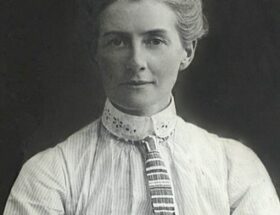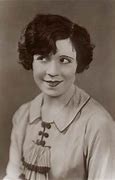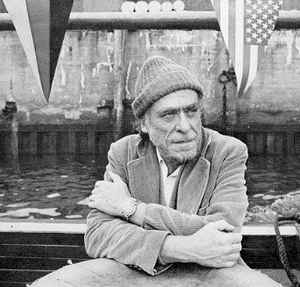
Early life
Emilio Salgari was born in Verona on August 21, 1862, to a family of modest merchants. From a young age, he had a desire to explore the seas and this led to him enrolling in the “P. Sarpi” Royal Technical and Nautical School in Venice on 1878. His academic performance was deemed too poor, and he never obtained his diploma.
Emilio began his writing career as a reporter on the daily La Nuova Arena, which published some of his work as serials. As his powers of narration grew, so did his reputation for having lived a life of adventure.
He claimed to have explored the Sudan desert, met Buffalo Bill in Nebraska (he had actually met him during his “Wild West Show” tour of Italy), and sailed the Seven Seas. His early biographies were filled with adventurous tales set in the Far East, events which he claimed were the basis for much of his work. Emilio, however, had actually never ventured farther than the Adriatic Sea.
Emilio turned his passion for exploration and discovery to writing. His first stories were serialized in newspapers. Early in his career, he began signing his tales as “Captain Salgari”, a title he once defended in a duel when his claim to it was questioned.
Though knighted by the Queen of Italy and wildly popular, Emilio did not earn much money from his books and lived hand to mouth for most of his life.
In 1892, he married Ida Peruzzi – nicknamed “Aida,” with whom he was very happy for years and had four children.
Writing career
Emilio wrote more than 200 adventure stories and novels, setting his tales in exotic locations, with heroes from a wide variety of cultures. He gained inspiration from reading foreign literature and newspapers, travel magazines and encyclopedias, which he used to portray his heroes’ worlds.
Emilio wrote four major series: The Pirates of Malaysia; The Black Corsair Saga; The Pirates of Bermuda; and a collection of adventures set in the Old West. His heroes were mostly pirates, outlaws and barbarians, fighting against greed, abuse of power, and corruption.
Among Emilio‘s most legendary heroes were Sandokan, The Tiger of Malaysia, a Bornean prince turned pirate, and his loyal lieutenant Yanez of Gomera, who led their men in attacks against the Dutch and British fleets. They declared war on James Brooke, the White Rajah of Sarawak, and tried to force him from his throne. The Black Corsair and Captain Morgan maintained a chivalric code in the Caribbean, while Emilio‘s pirates of Bermuda fought for American independence.
His tales had been so popular that soon his publisher hired other writers to develop adventure stories under his name. They added 50 novels to his “canon”. Emilio‘s style was imitated by many, but no other Italian adventure writer managed to duplicate his popular success.
Later life and death
Unfortunately, Emilio‘s private life was clouded by several tragedies. In 1889, his father committed suicide. Ida became ill after 1903 and Emilio‘s struggling increased with her medical bills.
These events led Emilio to depression and he attempted suicide in 1910. After Ida was committed to a mental ward in 1911, he was overwhelmed and took his own life soon afterwards, imitating the Japanese ritual of seppuku, and died on 25 April 1911.
He left three letters, addressed to his and Ida‘s children, his publisher, and the editors of his newspaper in Turin. The letter to his publisher said:
To you that have grown rich from the sweat of my brow while keeping myself and my family in misery, I ask only that from those profits you find the funds to pay for my funeral. I salute you while I break my pen.
Legacy
Emilio‘s work was imitated in one form or another by many who came after him. A large part of the Italian adventure literature is a continuation of his work. Many late 19th century writers such as Luigi Motta and Emilio Fancelli wrote further Sandokan adventures imitating Salgari’s style: fast-paced, filled with great battles, blood, violence and punctuated with humour.
The style soon spread to movies and television. One example is the work of the director Sergio Leone, whose outlaw heroes in his Spaghetti Westerns were inspired by Salgari‘s piratical adventurers. More than 50 film adaptations have been made of Emilio‘s novels, and many more were inspired by his work (corsair stories, jungle adventure stories, and swashbuckling B movies, such as Morgan, the Pirate, starring Steve Reeves).
His work was very popular in Portugal, Spain and Spanish-speaking countries, where Latin American writers such as Gabriel Garcia Marquez, Isabel Allende, Carlos Fuentes, Jorge Luis Borges and Pablo Neruda, all attested to reading him when young.
Though popular with the masses, Emilio was shunned by critics throughout his life and for most of the 20th century. It was not until the late 1990s that his writings began to be revisited, and new translations appeared in print.
Bibliography
The Sandokan series
- The Mystery of the Black Jungle (I Misteri della Jungla Nera, 1895)
- The Tigers of Mompracem (Le tigri di Mompracem, 1900)
- The Pirates of Malaysia (I pirati della Malesia, 1896)
- The Two Tigers (Le due Tigri, 1904)
- The King of the Sea (Il re del mare, 1906)
- Quest for a Throne (Alla conquista di un impero, 1907)
- Sandokan to the Rescue (Sandokan alla riscossa, 1907)
- Return to Mompracem (La riconquista di Mompracem, 1908)
- The Brahman (Il Bramino dell’Assam, 1911)
- An Empire Crumbles (La caduta di un impero, 1911)
- Yanez’ Revenge (La rivincita di Yanez, 1913)
The Black Corsair series
- The Black Corsair (Il Corsaro Nero, 1898)
- The Queen of the Caribbean (La regina dei Caraibi, 1901)
- Yolanda, the Black Corsair’s Daughter (Jolanda, la figlia del Corsaro Nero, 1905)
- The Son of the Red Corsair (Il figlio del Corsaro Rosso, 1908)
- The Last Pirates (Gli ultimi filibustieri, 1908)
The Pirates of Bermuda series
- I corsari delle Bermude (1909)
- La crociera della Tuonante (1910)
- Straordinarie avventure di Testa di Pietra (1915)
Adventures in the Old West series
- Sulle frontiere del Far-West (1908)
- La scotennatrice (1909)
- Le selve ardenti (1910)
Two sailors
- Il Tesoro del Presidente del Paraguay (1894)
- Il Continente Misterioso (1894)
Il Fiore delle Perle
- Le stragi delle Filippine (1897)
- Il Fiore delle Perle (1901)
I figli dell’aria
- I Figli dell’Aria (1904)
- Il Re dell’Aria (1907)
Captain Tempesta
- Captain Tempesta (Capitan Tempesta, 1905)
- The Lion of Damascus (Il Leone di Damasco, 1910)
Short stories
- I racconti della Bibliotechina aurea illustrata (1900–1906)
- Le novelle marinaresche di Mastro Catrame (1894)
- Le grandi pesche nei mari australi (1904)
Adventures set in India and Asia
- I naufragatori dell’Oregon (1896)
- La rosa del Dong-Giang (1897; also known as: Tay-See)
- Il capitano della Djumna (1897)
- Sul mare delle perle (1903)
- La città del re lebbroso (1904)
- La gemma del fiume rosso (1904)
- La Perla Sanguinosa (1905)
Adventures set in Africa
- I drammi della schiavitù (1896)
- La Costa d’Avorio (1898)
- Le caverne dei diamanti (1899)
- Le avventure di un marinaio in Africa (1899)
- La giraffa bianca (1902)
- La montagna d’oro (1901; also known as: Il treno volante)
Adventures set in the desert and the Middle East
- Il re della montagna (1895)
- I predoni del Sahara (1903)
- I briganti del Riff (1911)
- I predoni del gran deserto (1911)
Tales of lost cities and great treasures
- La scimitarra di Budda (1892)
- La città dell’oro (1898)
- Duemila leghe sotto l’America (1888) (also known as Il tesoro misterioso)
- La montagna di luce (1902)
- Il tesoro della montagna azzurra (1907)
Adventures set in Russia
- Gli orrori della Siberia (1900)
- L’eroina di Port Arthur (1904, also known as La Naufragatrice)
- Le aquile della steppa (1907)
Adventures set in the Old West
- Il re della Prateria (1896)
- Il figlio del cacciatore d’orsi (1899)
- Avventure fra le pellirosse (1900)
- La sovrana del campo d’oro (1905)
Adventures set in the lands of ice and snow
- Nel paese dei ghiacci (1896)
- Al Polo Australe in velocipede (1895)
- Al Polo Nord (1898)
- La Stella Polare e il suo viaggio avventuroso (1901; also known as: Verso l’Artide con la Stella Polare)
- La Stella dell’Araucania (1906)
- Una sfida al Polo (1909)
Historical Adventures
- Le pantere di Algeri (1903)
- Le figlie dei Faraoni (1905)
- Cartagine in fiamme (1908)
Survival stories
- I pescatori di balene (1894)
- I Robinson italiani (1896)
- Attraverso l’Atlantico in pallone (1896)
- I minatori dell’Alaska (1900)
- L’uomo di fuoco (1904)
Adventures on the High Seas
- Un dramma nell’Oceano Pacifico (1895)
- I naufraghi del Poplador (1895)
- I pescatori di Trepang (1896)
- Gli scorridori del mare (1900)
- I solitari dell’Oceano (1904)
- Sull’Atlante (1907)
Adventures set during times of war and revolution
- La favorita del Mahdi (1887)
- La capitana del Yucatan (1899)
- Le stragi della China (1901; also known as: Il sotterraneo della morte)
Adventures set in Italy
- I naviganti della Meloria (1902)
Adventures involving time travel
- Le meraviglie del Duemila (1907)
Autobiographical
- La Bohème italiana (1909)


